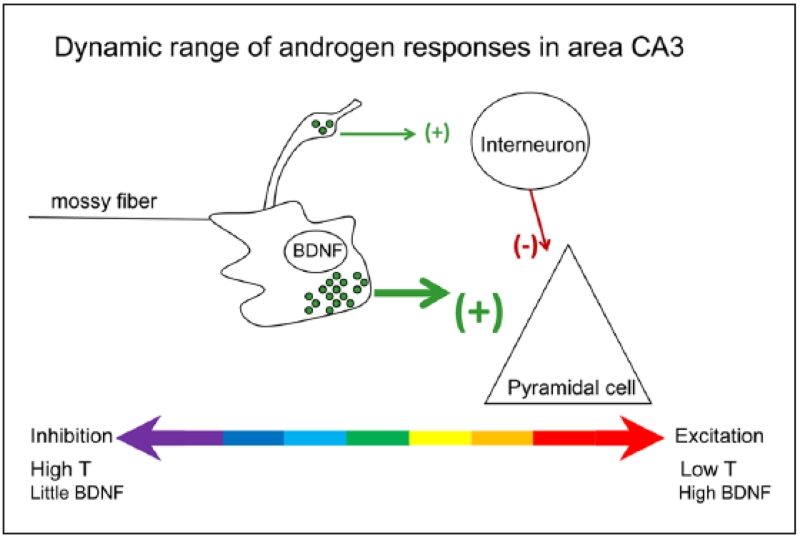Figure 5.
A schematic of the mossy fiber synapse shows a large bouton innervating a thorny excrescence of a CA3 pyramidal cell proximal apical dendrite. The large boutons have dense core vesicles that contain BDNF. A filamentous extension from the large bouton makes a smaller synaptic contact on a GABAergic neuron. Under normal conditions in the adult male rat, the mossy fiber system exerts a strong inhibitory tone because of the relatively low concentrations of BDNF (which normally facilitates glutamate release), the abundance of connections to the GABAergic interneurons, and high levels of the neurosteroid metabolite of testosterone, 5α-androstane-3α, 17β-diol, which facilitates GABA action at GABAA receptors. After gonadectomy, the mossy fiber pathway becomes more excitable, for two main reasons. First, there is a reduction in the effects of 5α-androstane-3α, 17β-diol at the GABAA receptor, because serum levels of its precursor (testosterone) fall. In addition, BDNF synthesis is increased while axonal sprouting occurs, so that more mossy fibers innervate area CA3 pyramidal cells (Skucas and others 2013).

